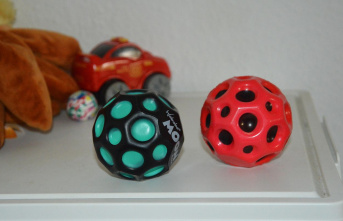There are said to be people who think they can hear the grass growing. Of course only in a figurative sense. Because this idiom comes from the world of legends. And yet it can easily be combined with the sacred green of many small and allotment gardeners. Because it means nothing other than the ability to recognize on the basis of the smallest signs how certain things could develop. Well, even allotment gardeners are not clairvoyant, but they largely have the well-being of their lawn in their own hands. Scarify, fertilize, mow, overseed and start all over again. The so inconspicuously growing greenery requires a lot of care. At least if you value strong and healthy stalks that grow evenly and keep supposed troublemakers like clover or small mushrooms at bay. Liming is also part of the basics of annual lawn care.
When the right time is, how the lawn should be prepared for liming and which tools are important for this, you will find out briefly and concisely in the following article.
First things first: A lot helps a lot, is the wrong approach when liming the lawn. First of all, it should be clarified whether the stalks need lime treatment at all. The pH value of the soil from which they sprout is decisive. If this value is 6.5 or higher, you should absolutely avoid liming. In this case, the soil is already alkaline. Additional lime would therefore be counterproductive. A pH soil test only costs a few euros and spits out a result in a few minutes. Sandy or loamy soils usually have values between 5 and 6, so chemically they are acidic.
Tip: Heavy moss infestation can be an indication of a particularly acidic soil. And this is exactly where garden lime comes into play, because the white powder can - if dosed correctly - at least somewhat neutralize soils with pH values of less than 5.5.
First of all, experts recommend liming the lawn (if the pH value is appropriate) only every two to three years to avoid an overdose. Experience has shown that young blades of grass in particular sprout best in April to May. Spring is therefore a good time to give your lawn a little boost with lime. In this frequently rainy season, however, before liming the lawn, you should make sure that the soil and the meadow are dry.
With an Alternate voucher there are also some garden tools cheaper.
In order for the lime to take effect perfectly, you should scarify the lawn in advance. The soil is supplied with oxygen and freshly aerated, which is urgently needed after the cold winter months. In addition, good scarifiers also take care of annoying weeds. In short: scarifying creates the perfect framework for successful liming. If you don't have time to scarify, you should at least mow the lawn before liming.
Click here for a current scarifier comparison.
First of all - as with most other gardening work - adequate gloves should be put on when liming the lawn. Especially if you apply the lime granules by hand. In this way you avoid unpleasant skin irritations. A spreader is the most elegant way of spreading the lime. There is hardly any risk of coming into contact with the lime. In addition, the white fertilizer can be distributed much more evenly on the lawn with this special device. Important: Don't touch quicklime! This is used in the construction and chemical industries. DIY stores carry special garden lime for liming the lawn. It is best to lime on a windless day with a cloudy sky. If the sun hits the lawn after liming, there is a risk that the grass will burn.
Also important: Give your freshly whitewashed lawn some time to rest after the work is done.
Sandy soils with a pH between 5 and 5.5 can be limed with up to 200 grams per square meter. Loamy soil with a value of 6 or higher tolerates twice the dose, i.e. around 300 to 400 grams of lime per square meter of lawn. For a lawn area of five by ten meters (50 square meters), you need between ten and 20 kilograms of garden lime, depending on the pH value of the soil.
To ensure that the lime can be processed profitably in the soil, the lawn should be thoroughly watered with a garden hose after liming. This is the only way for the lime to seep to where it is needed to neutralize the acidity in the soil. After that, the mowed, scarified, limed and watered meadow needs a little breather. Important: Give the lawn a few weeks to recover. The meadow also has no use for fertilizer during this resting phase.
This article contains so-called affiliate links. Further information are available here.
Source: "My beautiful garden"











